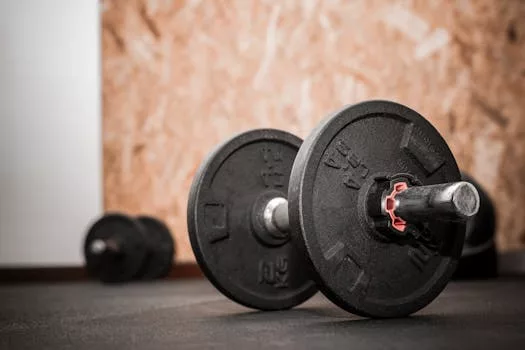
High-Intensity Interval Training for Fat Loss: The Ultimate Guide
Introduction to High-Intensity Interval Training (HIIT)
High-Intensity Interval Training (HIIT) is a type of workout that involves short periods of high-intensity exercise followed by brief periods of rest. This type of training has been shown to be effective for fat loss, improving cardiovascular health, and increasing muscle strength and endurance. In this article, we will explore the benefits of HIIT for fat loss and provide a comprehensive guide on how to incorporate HIIT into your workout routine.
How HIIT Works for Fat Loss
HIIT is based on the principle of pushing your body to its limits for short periods, followed by rest and recovery. This type of training causes a significant increase in your heart rate and metabolism, which leads to a higher caloric burn during and after exercise. The high-intensity intervals also stimulate the production of certain hormones, such as epinephrine and norepinephrine, which help to break down fat cells and increase fat loss.
The Science Behind HIIT
Research has shown that HIIT is more effective for fat loss compared to traditional steady-state cardio exercises. This is because HIIT causes a greater increase in excess post-exercise oxygen consumption (EPOC), which is the amount of oxygen your body uses to recover from exercise. EPOC is a key factor in fat loss, as it leads to an increase in caloric burn and fat oxidation after exercise.
Benefits of HIIT for Fat Loss
The benefits of HIIT for fat loss are numerous. Some of the most significant advantages include:
- Time-Efficient: HIIT workouts are typically shorter than traditional workouts, lasting anywhere from 15-30 minutes.
- Caloric Burn: HIIT causes a significant increase in caloric burn during and after exercise, leading to greater fat loss.
- Improved Insulin Sensitivity: HIIT has been shown to improve insulin sensitivity, reducing the risk of developing type 2 diabetes.
- Increased Muscle Strength and Endurance: HIIT workouts often involve strength training exercises, which can help to increase muscle strength and endurance.
- Enhanced Cardiovascular Health: HIIT is an effective way to improve cardiovascular health, reducing the risk of heart disease and stroke.
Incorporating HIIT into Your Workout Routine
To incorporate HIIT into your workout routine, follow these steps:
- Start with Low-Intensity Interval Training: Begin with low-intensity interval training and gradually increase the intensity as you become more comfortable with the workout.
- Choose Your Exercises: Select a variety of exercises that work different muscle groups, such as sprints, burpees, jump squats, and mountain climbers.
- Warm Up and Cool Down: Always warm up before your workout and cool down afterwards to prevent injury and reduce muscle soreness.
- Listen to Your Body: Rest and recovery are crucial when it comes to HIIT. Listen to your body and take rest days as needed.
Example HIIT Workout Routine
Here is an example HIIT workout routine:
- Warm-Up: 5-minute dynamic warm-up, including stretching and light cardio.
- Sprints: 30 seconds of sprinting followed by 30 seconds of rest. Repeat for 15-20 minutes.
- Burpees: 30 seconds of burpees followed by 30 seconds of rest. Repeat for 15-20 minutes.
- Cool-Down: 5-minute static stretching to help your body recover.
Conclusion
In conclusion, High-Intensity Interval Training (HIIT) is a highly effective way to achieve fat loss and improve overall fitness. By incorporating HIIT into your workout routine, you can experience significant improvements in cardiovascular health, insulin sensitivity, and muscle strength and endurance. Remember to start slowly, listen to your body, and rest and recover adequately to avoid injury and burned out. With consistent practice and dedication, you can achieve your weight loss goals and improve your overall health and well-being.




